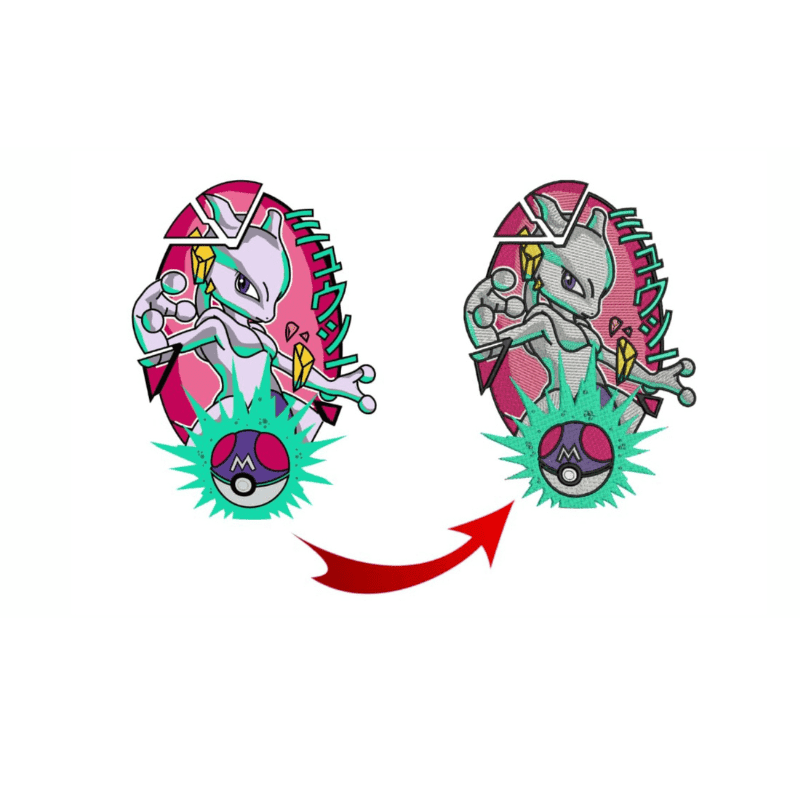Simplifying the Art of Embroidery Digitizing: Step-by-Step Overview
As modern technology continues to advance, the digitization procedure has come to be much more accessible, enabling enthusiasts to bring their detailed designs to life with convenience. In this guide, we will certainly unravel the intricacies of embroidery digitizing, damaging down each step carefully to improve the procedure and equip both newbies and experienced embroiderers alike.
Understanding Needlework Digitizing Software Application
Needlework digitizing software application acts as an essential device for transforming intricate layouts into electronic formats compatible with needlework devices, promoting exact sewing and personalization. This specialized software program enables users to import various picture documents formats, such as JPG or PNG, and convert them right into needlework machine-readable styles like DST, EXP, or PES - Digitizing for Embroidery. By utilizing attributes like stitch modifying, underlay choices, and string color option, digitizing software allows customers to manage every facet of the design procedure
In addition, advanced needlework digitizing software program offers tools for creating complicated layouts, changing stitch density, and incorporating detailed details. Users can likewise sneak peek the style before stitching it out, making certain precision and minimizing mistakes. Additionally, many software programs offer automatic features that help improve the digitizing process, saving time and effort.
Recognizing the capacities of needlework digitizing software is important for accomplishing top notch outcomes in needlework tasks. By grasping this device, needlework fanatics and specialists can unleash their creativity and bring elaborate layouts to life with accuracy and efficiency.

Picking the Right Layout File
After acquainting yourself with the abilities of needlework digitizing software, the following essential step in the process is selecting the appropriate layout documents for your project. Digitizing for Embroidery. When choosing a design apply for needlework digitizing, it's vital to consider the complexity of the design, the size of the end product, and the kind of material you will certainly be dealing with
For detailed designs with fine details, a high-resolution picture or vector documents is advised to ensure that the embroidery equipment can properly reproduce the layout. In addition, the dimension of the last item plays a substantial duty in selecting the ideal layout file. Larger designs may require greater resolution data to preserve clarity and sharpness.
Additionally, the type of material you will certainly be stitching on influences the option of design data. Various fabrics may call for adjustments in the style documents to guarantee that the stitches are Get More Info appropriately lined up and the design appears as planned. By thoroughly picking the right design data based upon these variables, you can set on your own up for an effective embroidery digitizing process.
Digitizing Devices and Strategies
Using specialized software program and precision methods, digitizing devices are necessary in transforming complex designs into embroidery-ready documents. Embroidery digitizing software, such as Wilcom, Hatch, or Embrilliance, supplies the required system to transform art work right into stitch data. These programs supply attributes like stitch editing and enhancing, padding choices, and text devices to ensure the design translates perfectly onto fabric.
Among the vital strategies in digitizing is developing a clear course for the needlework equipment to adhere to. This includes digitizing each component of the layout with accuracy, establishing stitch kinds, thickness, and instructions. By utilizing devices like digitizing tablet computers or software-specific plugins, embroiderers can accomplish a high level of precision in their digitized layouts.
Furthermore, mastering the art of padding sewing is crucial for generating top quality embroidery. Underlay stitching supports the textile and produces a foundation for the design, ensuring that the end product is both visually enticing and durable. By understanding these digitizing tools and techniques, embroiderers can boost their craft and bring complex designs to life with accuracy and performance.
Personalizing Stitch Types and Instructions
The choice of stitch kinds can considerably impact the total look and appearance of the stitched design. By tactically combining these stitch kinds, embroiderers can attain deepness and measurement in their styles.
Moreover, the instructions of stitches plays an important duty in boosting the visual charm of the final embroidery. Diverse stitch instructions can add appearance, highlight specific elements, and develop aesthetic passion. Altering the angle of stitches can mimic motion or all-natural patterns like fur or feathers. By experimenting with different stitch angles and patterns, embroiderers can bring their designs to life with amazing detail and intricacy. Grasping the art of personalizing stitch types and directions equips embroiderers to release their imagination and boost the top quality of their work.
Testing and Refining Your Digitized Style
To make sure the accuracy and quality of your digitized style, complete testing and refinement are necessary action in the embroidery digitizing process. When see here now you have finished the digitization of your design, it is important to test it prior to continuing with the real find more info needlework. Checking permits you to determine any potential concerns such as thread breaks, sew thickness troubles, or style distortions that might impact the result.

After testing, it is necessary to refine your digitized layout based on the responses from the examination sew-out. This might entail tweaking stitch setups, adjusting thickness, or making adjustments to the total design to accomplish the desired result. By iterating through screening and refinement, you can adjust your digitized design to excellence prior to progressing with the real embroidery procedure.
Verdict
Finally, understanding the art of embroidery digitizing requires a complete understanding of the software application, selecting the appropriate layout file, utilizing digitizing tools and strategies, tailoring stitch kinds and instructions, and screening and refining the digitized style. By following these steps, embroiderers can streamline the digitizing process and create high-grade stitched styles with precision and efficiency.
Comments on “Premier Digitizing for Embroidery: Perfect Stitch Every Single Time”